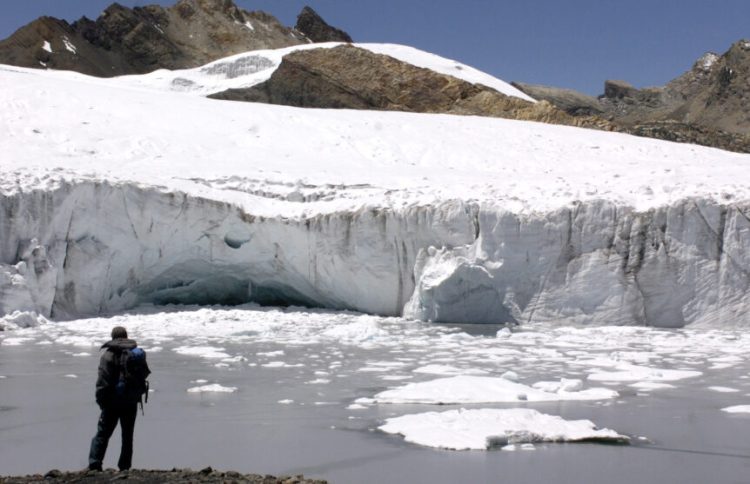The 2015 Paris agreement aims to prevent the Earth from heating up by 3.6 degrees Fahrenheit since the start of the industrial age.
But the world has already warmed about 2 degrees Fahrenheit since the Industrial Revolution, so this is more about preventing an additional 1.6 degrees of warming.
Each nation submitted its own goals for curbing heat-trapping emissions. Those pledges added up to preventing 117 billion tons of carbon dioxide from being put into the air by 2030, analysts calculate.
The U.S. set a target for reducing greenhouse gas emissions by 2025 to 26 to 28 percent below 2005 levels – about 1.6 billion tons of annual emissions. A study last year in the journal Nature Climate Change said America will probably reach only four-fifths of that goal.
For China, the No. 1 polluter, having overtaken the United States, the goal was for emissions to peak by 2030 and then start dropping, reducing the amount of carbon pollution per person to about 60 percent of 2005 levels. Some recent signs show that Chinese carbon emissions may have already flattened out, a decade earlier than expected. China accounts for nearly one-third of the pledged reductions.
The Paris accord was agreed upon by 197 countries and so far has been ratified by 147 parties, which includes the European Union. That put the deal in effect.
The goals are voluntary. There is no climate court. All that’s required is a plan and reporting on progress toward the plan.
THE U.S. OPTIONS
The U.S. could stay in the agreement and work toward fulfilling its pledges. It could stay in the accord and not hit its goals. It could stay in the pact and change its target, probably by lowering it. Or it could pull out of the agreement altogether.
It takes at least a year and possibly up to 3½ years for a nation to withdraw from the pact.
No matter what the U.S. does, the Paris agreement remains in effect.
THE SCIENCE
The world is warming, with the last three years the hottest on record. This year is on track to be the second-warmest, behind 2016.
Sea levels are rising. Sea ice in the Arctic is at record low levels. Glaciers worldwide are melting, as are parts of Antarctica. Plants and animals are changing in their growing and migration habits because of shorter and milder winters. Extreme weather in many places has increased.
All but a very few scientists say the overwhelming majority of warming is man-made, as do dozens of scientific academies and professional societies. Scientists have known since the 19th century that burning coal, oil and gas spews carbon dioxide into the air, which then acts like a blanket to trap heat on Earth.
Carbon dioxide stays in the air for 100 years, and about one-fifth of what has accumulated in the atmosphere came from the U.S., more than any other country.
WHAT WILL HAPPEN WITHOUT U.S. COOPERATION?
The Associated Press interviewed dozens of scientists and consulted computer simulations, and they say without the U.S. pledges, the dangerous 2-degree rise is nearly inescapable.
But they also say that even with the U.S. doing its share, preventing that warming is going to be unlikely and will require even more cuts than contained in the Paris agreement.
University of Oklahoma meteorology professor Jason Furtado said blowing past the 2-degree mark would be a potential “tipping point” that would lead to “a new and irreversible state in the climate system.”
One computer simulation – one that many other scientists say is too much of a worst-case scenario – calculates that if the U.S. increases carbon dioxide emissions and the rest of the world hits its targets, America’s added carbon pollution will be responsible for about half a degree of warming.
Other scientists look at market forces and see the United States still cutting emissions because the nation is already shifting toward cleaner fuels such as cheaper natural gas, solar and wind. Solar power employs more people in the U.S. than coal.
“The U.S. pulling out of Paris will not stop the fight against global warming, since almost all other countries are committed to it,” said German climate scientist Stefan Rahmstorf. “But it could delay it and any delay could be detrimental, as stopping global warming before critical tipping points are crossed is a race against the clock.”
Send questions/comments to the editors.



Success. Please wait for the page to reload. If the page does not reload within 5 seconds, please refresh the page.
Enter your email and password to access comments.
Hi, to comment on stories you must . This profile is in addition to your subscription and website login.
Already have a commenting profile? .
Invalid username/password.
Please check your email to confirm and complete your registration.
Only subscribers are eligible to post comments. Please subscribe or login first for digital access. Here’s why.
Use the form below to reset your password. When you've submitted your account email, we will send an email with a reset code.